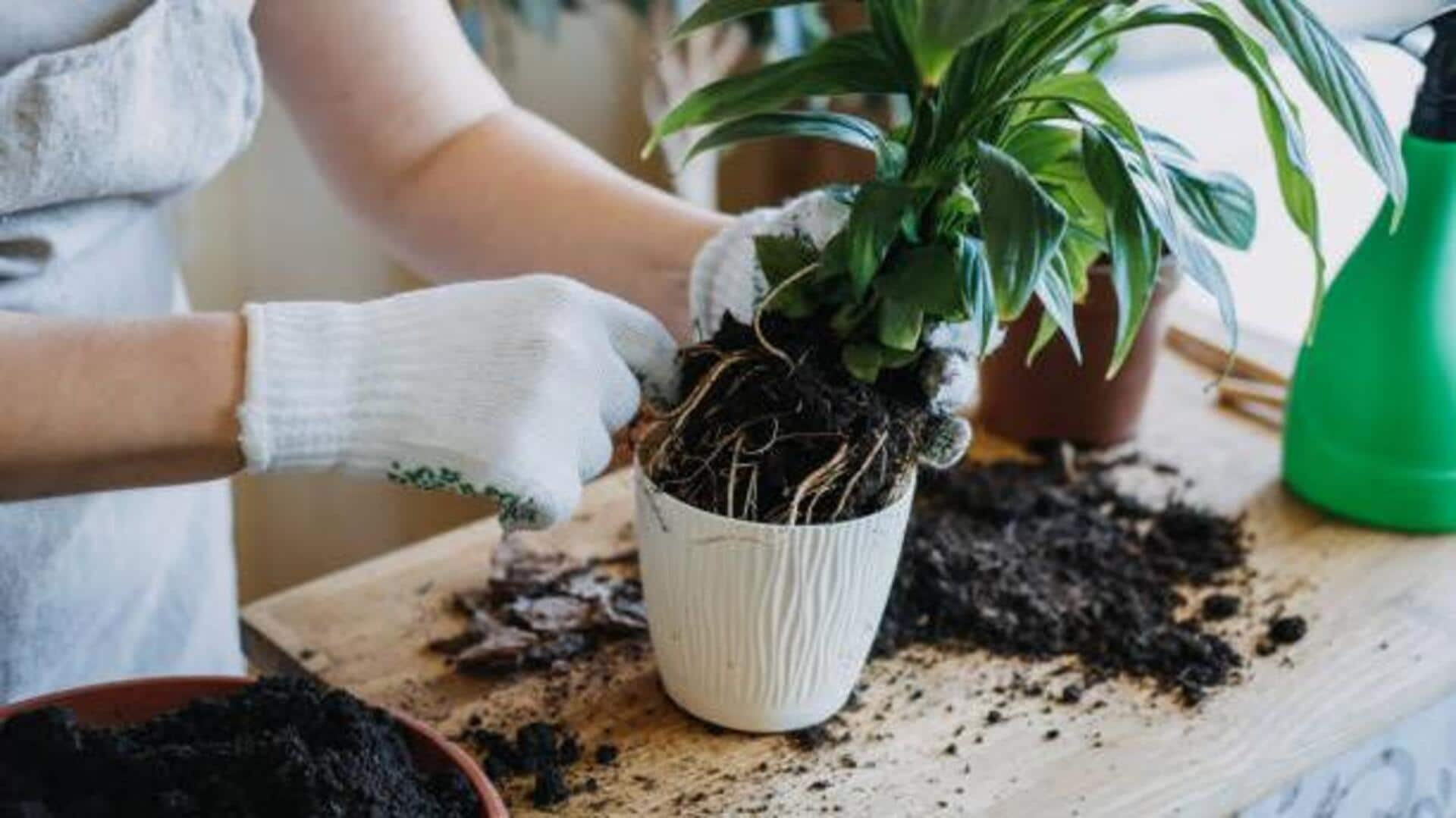
How to repot plants for healthy growth
What's the story
Repotting is an essential step towards keeping your plants healthy and growing. The process involves moving a plant out of its pot into a new one, generally bigger, to allow it the space for root growth. It prevents root-bound conditions and allows plants to have access to fresh nutrients. Knowing the right techniques can do wonders for how well your plants thrive post-repotting.
Tip 1
Choosing the right pot size
Choosing the right size of pot is critical while repotting. A larger pot can cause overwatering, while a smaller one may inhibit roots from growing. Ideally, pick a pot one or two inches wider in diameter than the current one. This provides sufficient space for roots to grow without inundating them with extra soil.
Tip 2
Preparing the soil mix
The soil mix is crucial for plant health after repotting. Always use a well-draining mix appropriate for your particular plant type. For most houseplants, a mix of peat moss, perlite, and vermiculite does the trick. Make sure the soil is moist but not soggy before filling the new pot with it to allow healthy root establishment.
Tip 3
Timing your repotting efforts
Timing can affect how well your plant adapts after being repotted. Ideally, the best time to repot most plants is during their active growing season, which is usually spring or early summer. Avoid repotting during dormancy, as it can put the plant under stress and hamper recovery.
Tip 4
Handling roots with care
When taking your plant out of its old pot, be gentle to avoid damaging roots. If you see any circling roots at the bottom of the root ball, carefully tease them apart or trim them a little with clean scissors. This promotes new growth and prevents getting root-bound in the future.
Tip 5
Watering after repotting
Proper watering after repotting is key to help the soil settle around the roots and reduce transplant shock. Water the plant thoroughly until it starts draining out of the bottom of the pot. However, avoid letting the plant sit in waterlogged condition, which could bring rot problems later on. Getting this balance right ensures your plant recovers well and thrives after repotting.